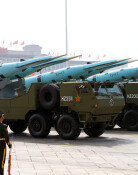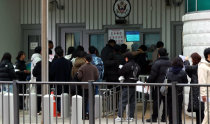[Opinion] Nature and Urban Development
[Opinion] Nature and Urban Development
Posted October. 23, 2002 22:47,
The Gyeonggi-do government recently unveiled an ambitious plan to build large-scale new towns in six areas located outskirts of Seoul. The plan is viewed as an alternative to the development of small and medium-sized residential areas, which has caused destruction of the environment during its course. The six areas designated by the new plan mostly include development-restricted or non-urban districts, therefore requiring further consultation with the Ministry of Construction and Transportation and other related agencies.
If the project is carried out in a hurried way without thorough action plans, it will end up reducing the green areas and create overcrowded cities, causing such serious problems as traffic congestion and air pollution. The regional government is emphasizing that by building new towns outskirts of Seoul, it will avoid damaging the environment while securing enough greens for city parks.
The environmental damage and securing of green tracts areas depend more on planning of land usage, however, rather than the scale of development project. In question is whether to include the natural surroundings in a frame of urban development to create a pleasant environment from a long-term perspective.
So far, our urban planning has been building sky scrappers and roads first before planting trees and creating woods. It`s time, however, to build a city in a larger landscape of trees and woods.
While a Utopia in the west exists only in mind as an exotic island or a paradise located far apart, Asians have been specifying the place. In this country, people have conjured up an image of a happy life when they say something about a paradise. To most, there is a significant difference in where they are living and where they wish to live in the future. As the gap is narrowed, people grow more satisfied. Although the source of their satisfaction comes mostly from wealth and social status in the modern era, environment is emerging as a major factor as well.
The metropolitan area, however, has turned into a mass complex filled with cars, houses and factories, as the society puts too much emphasis on economic and societal factors. Roads are being built with little regard to natural surroundings, doing irrevocable harm to the nature.
The 21st century is the age when the value of space is appreciated. So far, humans have regarded themselves as a master of the nature who has every right to dominate and exploit environment for the sake of economic development and growth. And now is the time to realize the priceless value of the earth and seek to preserve the culture in the natural settings.
If we put our best effort to preserve Seoul as it is today, the capital city of the country will emerge as one of the world`s cultural heritages decades later. Towns seated in a group against the background of a hill, fields, brooks and mountains, these are the natural settings given to this country.
Gyeonggi-do, located outskirts of Seoul, will be able to keep its unique natural settings by letting rural and urban areas exist in harmony. The metropolitan area is the best candidate for futuristic garden cities. We will be able to create a Utopia by building new towns in harmony with the nature. Hope we will have new towns where people find shade of trees under which they take a rest. It will be much better to have woods and clean water inviting squirrels, rabbits and birds.



![화장실 갇혔을 때 생존법…“최후에는 변기뚜껑” [알쓸톡]](https://dimg.donga.com/c/138/175/90/1/wps/NEWS/IMAGE/2025/12/26/133042007.3.png)



